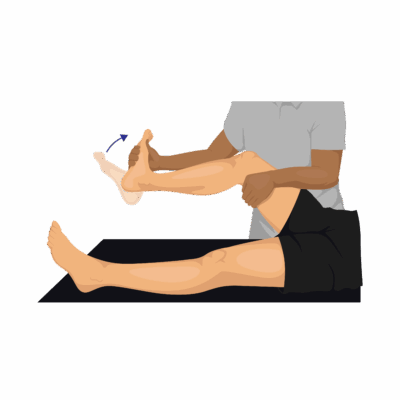Homan’s Sign
Homan’s Sign is a classic clinical test intended to screen for deep vein thrombosis (DVT) in the lower leg. Despite being commonly taught and used in the past, its diagnostic value is now considered quite limited due to low sensitivity and specificity.
How the Test is Performed
-
Client position: Supine (lying on their back) with the knee extended or slightly flexed.
-
The examiner forcibly dorsiflexes the client’s foot at the ankle (bends it upward toward the shin) while sometimes also gently squeezing the calf.
-
Positive test: The client reports pain or tenderness in the calf or behind the knee during the maneuver—sometimes accompanied by increased resistance or involuntary knee flexion.
Clinical Significance
-
A positive Homan’s Sign may suggest DVT, but it is notoriously unreliable—many other conditions (muscle cramp, strain, sciatica, Baker’s cyst, cellulitis) can also cause pain with dorsiflexion.
-
The sign’s sensitivity (10–54%) and specificity (39–89%) are low—meaning a negative test does not rule out DVT, and a positive test does not confirm it.
-
DVT is a potentially life-threatening condition, so a positive sign merits cautious referral for further testing (D-dimer, Doppler ultrasound).
Assessment
-
Homan’s Sign may be part of the basic screening for clients with leg pain, swelling, redness, warmth, or recent immobility/risk factors for DVT.
-
If DVT is suspected based on symptoms or history, avoid massage to the affected limb and refer the client for urgent medical evaluation.
-
Document findings, symptoms, and all actions taken—especially referral.
Treatment
-
Do not perform massage or deep tissue work over any area where DVT is suspected or confirmed, due to risk of dislodging a clot and causing pulmonary embolism.
-
DVT is a medical emergency; all manual interventions in the affected area are to be halted until medical clearance is obtained.
-
After confirmed DVT and medical management, massage and mobilization may be resumed cautiously—only with physician approval, typically focusing on non-affected areas and gentle supportive techniques.
Safety and Referral
-
Always refer immediately if DVT is suspected—especially if Homan’s Sign is positive and other symptoms (swelling, pain, redness, heat in calf/leg, recent inactivity, surgery, or postpartum state) are present.
-
Modern best practice relies on clinical prediction tools (e.g., Wells score) and confirmatory imaging for DVT diagnosis—not on Homan’s Sign alone

